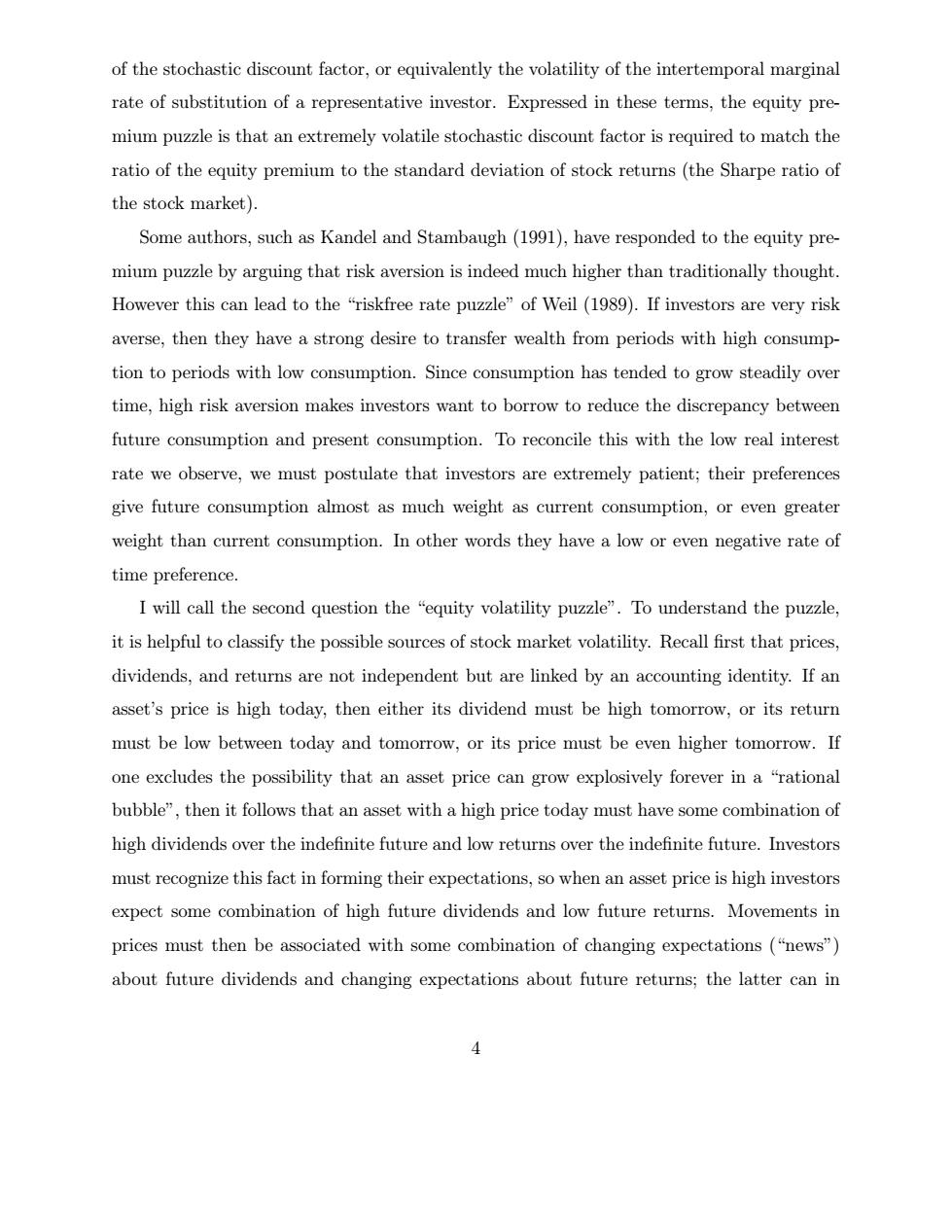正在加载图片...

of the stochastic discount factor,or equivalently the volatility of the intertemporal marginal rate of substitution of a representative investor.Expressed in these terms,the equity pre- mium puzzle is that an extremely volatile stochastic discount factor is required to match the ratio of the equity premium to the standard deviation of stock returns (the Sharpe ratio of the stock market). Some authors,such as Kandel and Stambaugh (1991),have responded to the equity pre- mium puzzle by arguing that risk aversion is indeed much higher than traditionally thought. However this can lead to the "riskfree rate puzzle"of Weil(1989).If investors are very risk averse,then they have a strong desire to transfer wealth from periods with high consump- tion to periods with low consumption.Since consumption has tended to grow steadily over time,high risk aversion makes investors want to borrow to reduce the discrepancy between future consumption and present consumption.To reconcile this with the low real interest rate we observe,we must postulate that investors are extremely patient;their preferences give future consumption almost as much weight as current consumption,or even greater weight than current consumption.In other words they have a low or even negative rate of time preference. I will call the second question the "equity volatility puzzle".To understand the puzzle, it is helpful to classify the possible sources of stock market volatility.Recall first that prices, dividends,and returns are not independent but are linked by an accounting identity.If an asset's price is high today,then either its dividend must be high tomorrow,or its return must be low between today and tomorrow,or its price must be even higher tomorrow.If one excludes the possibility that an asset price can grow explosively forever in a "rational bubble",then it follows that an asset with a high price today must have some combination of high dividends over the indefinite future and low returns over the indefinite future.Investors must recognize this fact in forming their expectations,so when an asset price is high investors expect some combination of high future dividends and low future returns.Movements in prices must then be associated with some combination of changing expectations ("news") about future dividends and changing expectations about future returns;the latter can in 4
#
$
%
.'
#
$
)
'
$
$
(
A
"
( (
B "
#
F
"
% A11B#
$
)
%% (
%
% ?
C(
D G
A141B -
(
#
%
%
)
"
%
# % (
(
#
'
>
%
%
#
%
%
-
%
-
$
C
$
D
#
( (
0
#
#
(
%
-
H
% #
%
#
#
%
-
'
%
'
C
D#
%
%
-
%
%
'
#
%
'
%
*
%%
'
AC
DB
%%
'
>
2��������������������������������������������������������������������������������������������������������������������������������������������������������������������������������������������������������������������������������������������